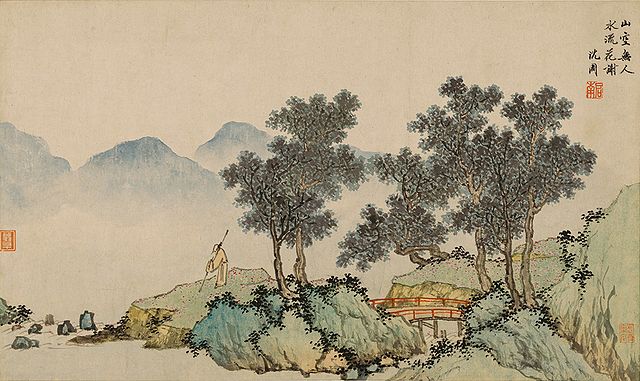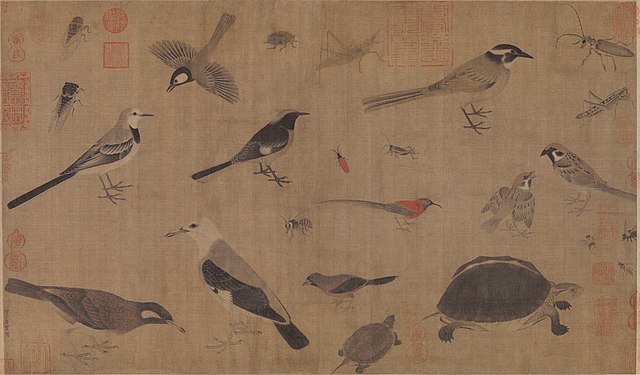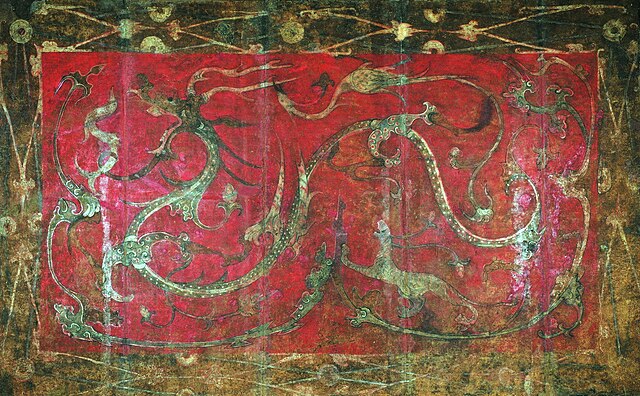Shen Zhou, courtesy names Qi'nan (启南) and Shitian (石田), was a Chinese painter in the Ming dynasty. He lived during the post-transition period of the Yuan conquest of the Ming. His family worked closely with the government and maintained its wealthy status. Shen later retired and lived a reclusive life, spending most of his time painting and taking care of his widowed mother.
Shen Zhou
Poet on a Mountaintop
Lofty Mt. Lu by Shen Zhou. 1467, Hanging scroll, 6′ × 3′. National Palace Museum, Taipei.
Poetic Feeling of Fallen Flowers by Shen Zhou. Album leaf, ink and color on paper, 35.9 x 60.1 cm. Nanjing Museum, China.
Chinese painting is one of the oldest continuous artistic traditions in the world. Painting in the traditional style is known today in Chinese as guó huà, meaning "national painting" or "native painting", as opposed to Western styles of art which became popular in China in the 20th century. It is also called danqing. Traditional painting involves essentially the same techniques as calligraphy and is done with a brush dipped in black ink or coloured pigments; oils are not used. As with calligraphy, the most popular materials on which paintings are made are paper and silk. The finished work can be mounted on scrolls, such as hanging scrolls or handscrolls. Traditional painting can also be done on album sheets, walls, lacquerware, folding screens, and other media.
Huang Quan's Almanac of Birds and Beasts; Late Tang, 10th century CE
Early Autumn by Qian Xuan (1235-1305)
Views of Xiaoxiang by Dong Yuan(932-962). Dong is considered as one of the originators of landscape painting styles; the scales of such paintings were often huge, with minuscule yet intricate pastoralist subjects showing the relative enormity of the landscape. Zoom into the left to see a group of men engaging in seine-haul fishing.
Western Han lacquered dragon mural, c. 2nd century BCE








